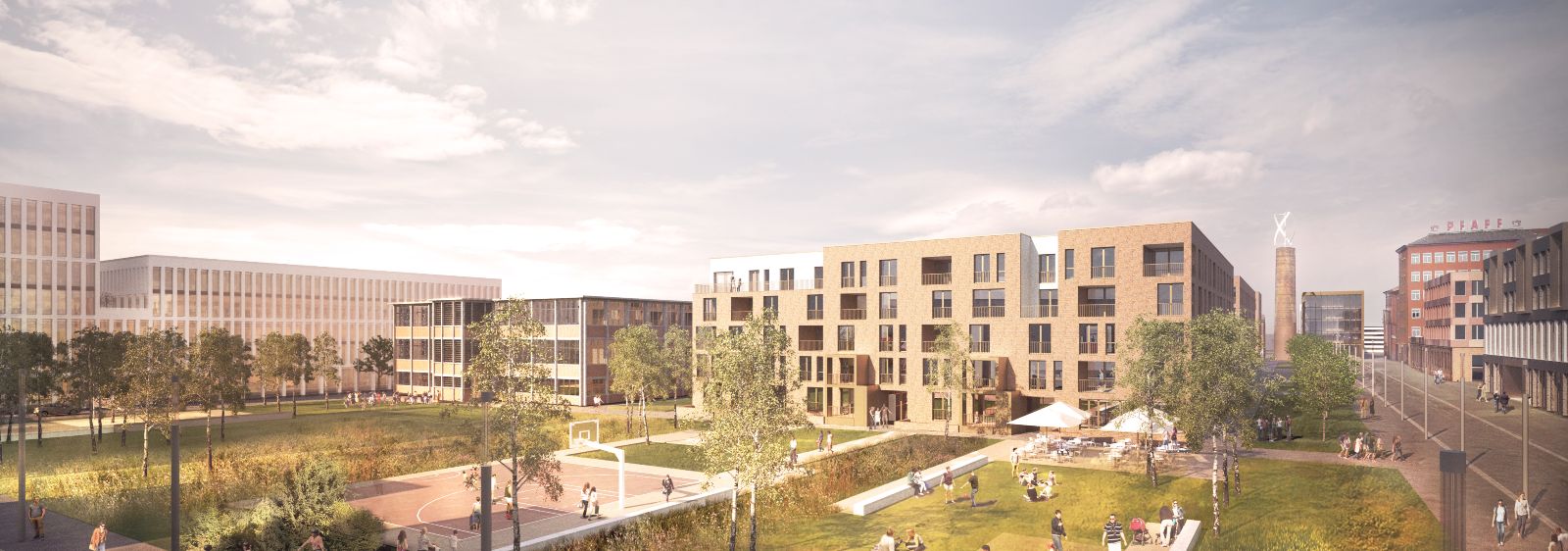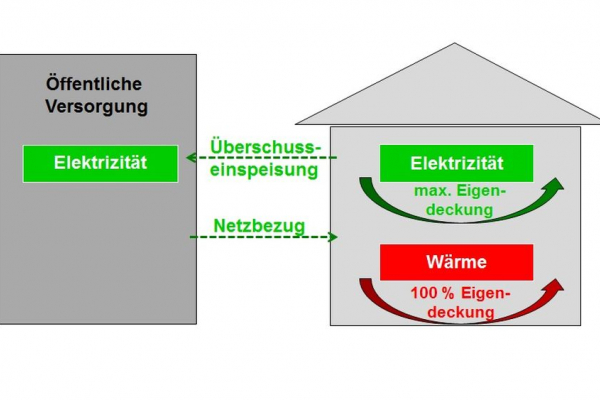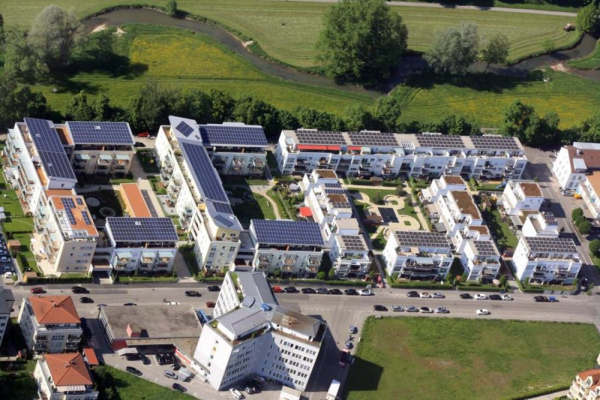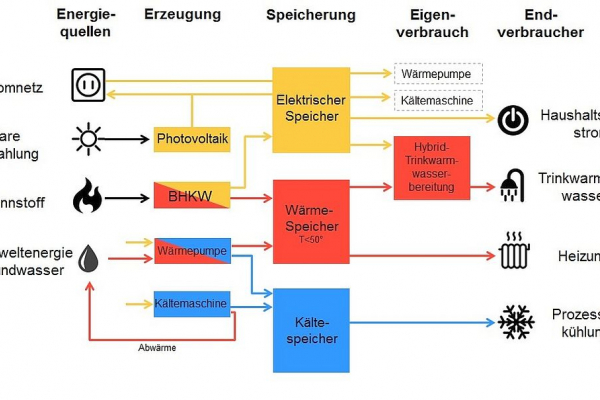
STADTQUARTIER-ENERGIEKONZEPT
A grid-neutral plus-energy district is created
Researchers at Munich University of Applied Sciences and Dresden University of Technology have developed an innovative energy concept for a plus-energy district, which is to be implemented in the "Neue Mitte" of Geretsried (Bavaria) by the end of 2019. The concept combines the use of different energy technologies with the goal of electrical grid neutrality, i.e. the highest possible self-coverage of electricity requirements and own use of the electricity generated.
So far about a fifth has been completed: After demolition of a row of buildings from the 1960s in Geretsried, construction work began in summer 2017 on the grid-neutral, so-called Energie⊕ district. The Puls G building is the first milestone in the construction of a new city centre, which is to be completed within five years.
In order to take account of the development from "pure energy consumer" to "energy actor" and to extend the energetic view from individual buildings to settlements and districts, the term "Energie⊕" was introduced as part of a research project at the Munich University of Applied Sciences in 2015. This approach is now being implemented in the Geretsried project (+EQ-NET ).
Energy is generated there by a combination of heat pump with ground collector under the building, photovoltaic system, combined heat and power plant, energy storage for heat, cold and electricity as well as a low-temperature distribution grid. In addition, there are hybrid water heaters in the apartments. With the help of the heat, cold and electricity storage tanks, generation and consumption are decoupled. Depending on demand and availability, the heat generator is selected according to economic and ecological criteria, taking seasonal fluctuations into account. The energy concept also offers real added value for the residents. The combination of underfloor heating and controlled living space ventilation results in a high level of living comfort.
The energy concept was developed as part of the +EQ-NET research project. The researchers used the experience of a predecessor project, the development of a plus-energy district in Landshut. Until 2015, the Ludmilla Wohnpark with 180 residential units in its final development was built on an industrial wasteland. Intensive monitoring and subsequent optimisation of building operation have significantly reduced energy consumption.
This is not the only reason why analyses of possible technical concept solutions were already carried out during the planning phase of the Energie⊕ quarter in Geretsried. A seasonal control concept should not only control the components of the energy concept in a grid-compatible manner wherever possible, but also keep the proportion of auxiliary energy as low as possible. Parallel to the structural implementation, a monitoring concept is currently being developed which will help to evaluate in detail the energy behaviour of the grid-neutral district and its residents. The measured values are to be used for the development of an online tool for the operational diagnosis and optimisation of buildings and visualised with the "O-ViVE" tool.
Planning and conception are funded by the Federal Ministry of Economics and Energy (BMWi) within the research initiative "Energy Efficient City" (EnEff:Stadt). The concept is implemented by EREA Projekt GmbH & Co. KG.




